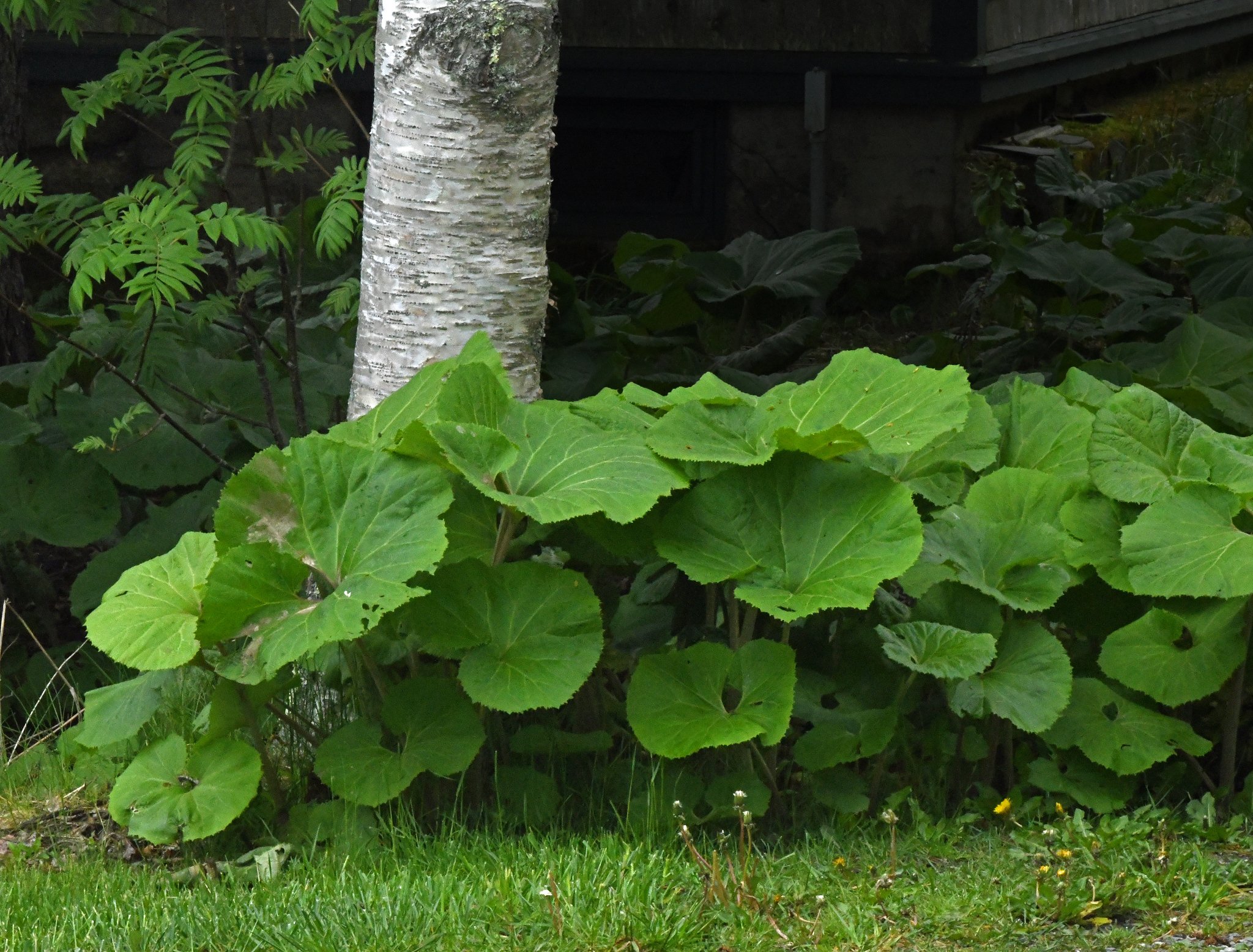We’ve been undergoing a chilly and wet period. So, it seems fitting that this maligned plant is doing some good here. Its very early flowers provide life-saving nectar for our pilgrim pollinators.
The plant is Japanese sweet coltsfoot (Petasites japonicus). It’s listed as invasive in Maine and was used unsuccessfully to treat the bubonic plague in the Middle Ages. It’s an Asian plant with stalks that are a very popular ingredient (“fuki”) in Japanese cuisine.
Apparently, the plant was introduced into North America in the 19th Century by Japanese immigrants to Canada’s British Columbia. It has a sweeter scent than other coltsfoot plants, including Maine’s native (non-invasive) sweet coltsfoot (Petasites palmatus).
This Asian import also is known as giant butterbur, great butterbur, and simply butterbur due to its large leaves that were used (as were those of related plants) to wrap and store butter and other perishables in cool places before refrigeration was common.
Japanese sweet coltsfoot goes through an enormous transformation in which the little one- and two-inch flowerheads shown here are replaced by sturdy stalks of about three feet in length with giant leaves at their ends. Those leaves can grow up to four feet in width and are shaped like a colt’s hoofprint, hence the plant’s name. Here’s a Leighton Archive image of the plant’s leaves:
(Images taken in Brooklin, Maine, on April 15, 2025.)


